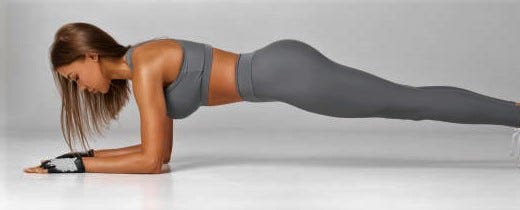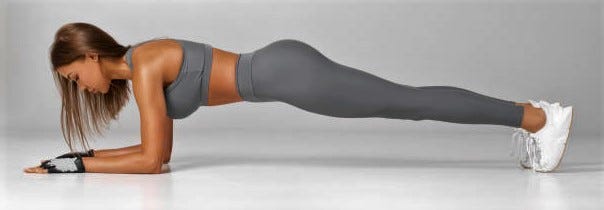Flirting with Planks.
Very popular back in the day might I add. Pirate stories, pirate movies, pirate TV shows/cartoons, what have you. Including one very popular franchise spawned from a film series of course.
Well one indelible image I have from all these pirate adaptations is walking the plank…! Issued I am assuming as a sort of punishment, this act forced dissenters to walk off a plank of wood into the deep blue shark infested sea for certain death. You may find this funny and unbelievable, but, even as a kid watching this stuff I used to say to myself, 'Oh no no, they got it all wrong. Silly pirates, planking is for core fitness. That's not how you plank…!'
In my very first and previous post about exercise (see link below), I talked about a calisthenics way of training your gluteus maximus. More importantly, I mentioned how important it is to do so (and why) for your glutes form a bridge that connect your legs and torso.
Well, the planking I will be talking about here will be a calisthenics sort of way of training your torso. Which, by the way, is the bridge between your upper body and lower body at large. The conditioning of your torso, or core, is very important and cannot be stressed enough.
You can have a very strong and robust upper and lower body. However, if your core is not sufficiently conditioned, you will not be able to effectively perform any normal or sportive tasks. This loss in efficiently will require more energy to perform at any level, and also open yourself up to accelerated wear and tear, or worse off, injury.
Don't believe me, look at the physique of any competitive gymnast. Their cores are massive. All those maneuvers they perform has naturally strengthened their torsos out of sheer necessity.
Do you need a core as strong as these gymnasts? No. Do you need to train your core at a minimum level? Yes. As in a few times per week, depending on your existing exercise regiment (regardless if one in fact exists or not).
You very well may have heard, seen, or done these before. Regardless, your about to hear about them again. Nobody can stop me.
Basically there are three forms of the plank you can perform. They are designed to condition and strengthen your abdominal, obliques, lower back/upper glute, and mid back (latissimus dorsi or lat) muscles. As the name suggests, you basically will be forming a plank with your body suspended off the floor with only your feet and forearms touching.
One version will be facing down, which is the traditional version. This will hit all muscles mentioned fairly equally. Start by laying face down on the floor, then suspend your body off the floor by only allowing the toes of your feet and forearms to touch.
The other two versions will hit your obliques pretty good. Dubbed the side plank, they are performed with your body suspended on its side. In other words, your chest will not be facing the floor. It shall be perpendicular, say facing a wall. The contact points to the floor will be a forearm and side of the respective foot.
So to hit your left oblique, suspend your body by your left forearm and side of your left foot. To hit your right oblique, suspend your body by your right forearm and side of your right foot.
To really be true to the name of this exercise you have to pay attention to your alignment. This is an important part that people get wrong when I see them perform planks.
For the traditional version, your torso and legs have to be in line with one another. You must resist bending at your hips in any direction. Your entire body must be completely flat. This includes your head which must be in line with the rest of your body. Therefore, your spine and legs must form one straight line from a side and top view.
Ditto for the side versions, you must be completely flat with your spine in perfect alignment with your legs. Additionally, you must resist bending at your waist to your left or right.
There shall be no kinks between your legs and torso for any of the above plank versions. Utilize a mirror to check your alignment if you're alone. Or, if not, utilize a friend or family member give you honest feedback. Proper form will pay leaps and bounds in the long term.
When you pay attention to keeping this form intact, you will be getting the most out of this exercise. You will truly be forming a plank.
Do these for time. Challenge yourself by holding them for as long as possible. Do all three in the same training session if you like. Or, do the side planks on a different day from the traditional ones. Try to hold them for longer and longer the more you get used to them.
Those pirates got to get it together man… There's too much misinfo in this world.
To help grow this newsletter please Like, Comment, Share, and Subscribe.
To help support this newsletter, consider becoming a Paid Subscriber.








